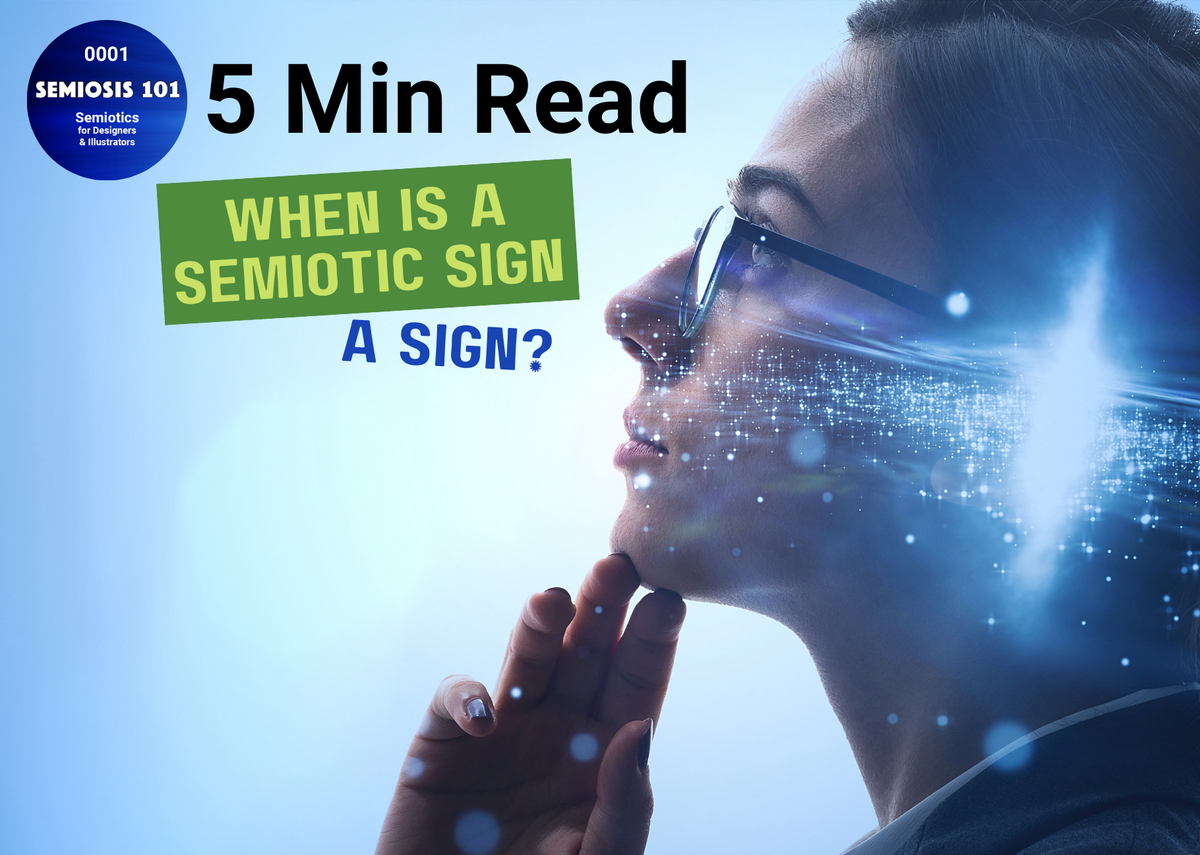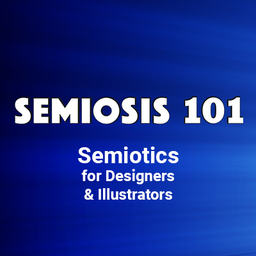BLOG 01: When Is A Semiotic Sign A Sign?

Semiosis 101 - 5 minute semiotic read
When is a semiotic sign a semiotic sign?
What IS a sign?
When Is A Semiotic Sign A Sign?
Well in Peircean terms, a semiotic sign is not a sign until it is perceived as a sign.
We are in the context of Pragmatic semiotic theory so to explain how a semiotic sign comes into being, let’s begin with Charles Sanders Peirce. Peirce says, “Nothing is a sign, until it is interpreted as a sign.” In designing semiotic visual communications, the act of interpretation is in the hands of the
audience: the reader, the viewer, the user …a fellow human being. If the design or illustration’s intended concept is to connotatively connect with the intended target audience, the visual language needs to align itself with that same audience for them to understand the message. In Peircean semiotics, the semiotic communication of that intended concept is controlled by three levels of semiotic sign-action: Iconic, Indexical and Symbolic classes of representation. Peirce calls this semiotic sign-action, Semiosis.
Visual language is naturally crafted with semiotic signs that the target audience will be exposed to, whether the designer or illustrator intends it or not. The audience unconsciously interprets the visual language to mean what they think it means, which is, unfortunately, not always what the designer or illustrator intends. This is where designers and illustrators conscious crafting of semiotic signs into their designs or illustrations, to improve their visual communication abilities, will improve reception and cohesion.
This is where the power of Iconic, Indexical and Symbolic semiotic representation helps target audiences arrive at the intended interpretations of the concept to be communicated. To visually communicate the concept to lead to accurate interpretations depends on the representation choices.
How is this achieved? How can designers’ and illustrators’ visual language choices become laden with semiotic signs that will be interpreted? Well, Semiosis' power was in plain sight all the time in designers’ and illustrators’ sketchbook scribblings. So, to explain how this is possible, let us reimagine the ideation design processes.
Sketching is a natural part of a designer or illustrator’s existing creative process to find a solution to a brief’s visual communication challenge. Creatives often attribute their success to how they achieve this as tacit knowledge …“knowledge we cannot tell.”
Michael Polanyi in his book The Tacit Dimension clarifies this as “knowing what” and “knowing how” to solve design problems. But with an application of Semiosis into the ideation phase, Peirce offers designers and illustrators a real strategy to improve natural connections with their target audiences.
In Peirce's Semiosis, its sign-action power between what the concept is, how it is represented which facilitates an interpretation sets its foundation levels in Iconic, Indexical and Symbolic representation.
Now these levels are integral in all aspects of how we design or illustrate, which leads our intended audience's interpretation connotatively to the intended concept and message. The Iconic level of representation is the point where, like basic building blocks of visual language creation, the interpretation of a semiotic sign begins (or not).
Iconic representation’s power to help designers and illustrators to make stronger connections with their target audience, emerges from the basic resemblances to things already known and experienced by the audience.





